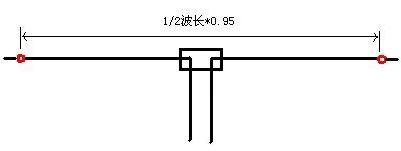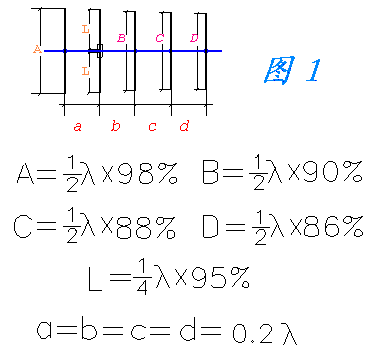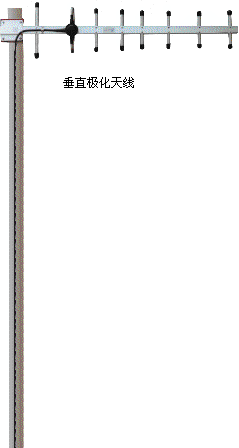[Wei Bing] As the popularity of the V / U band increases, homemade Yagi antennas have become a hot topic again. In the 1920s, Hideki Yagi and Uda Taiya of Tohoku University invented this kind of antenna, which is called "Yagi Uda antenna", or "Yagi Antenna" for short.
Yagi antennas are really easy to use. It has good directivity and higher gain than dipole antennas. Use it to measure direction, long-distance communication is particularly good. If it is equipped with elevation and azimuth rotation control devices, you can communicate with radio stations in all directions including space vehicles as you like. This feeling is not available from the upright antenna.
A typical Yagi antenna should have three pairs of vibrators, and the entire structure is in the shape of a "king". The active vibrator, or main vibrator, connected to the feeder is among the three pairs of vibrators, with a horizontal line in the middle of the word "king". The reflector is slightly longer than the active vibrator. It is on the side of the active vibrator and plays a role in weakening the radio waves transmitted from this direction or the radio waves emitted from the antenna; it is slightly shorter than the active vibrator. The director, which is located on the other side of the active vibrator, can enhance the radio wave transmitted from this direction or emitted in this direction. There can be many directors, each of which is slightly shorter than the adjacent one and close to the active vibrator. The more directors, the sharper the direction and the higher the gain, but in fact, after more than four or five directors, this "benefit" increase is not obvious, but the volume is large, the weight increases, and the material strength requirements Problems such as improvement and increased costs are becoming more prominent. Usually a pair of five-unit Yagi (that is, three directors, a reflector and an active vibrator) is enough.
Each director and reflector are made of a metal rod. No matter how many "units" there are, all the vibrators are fixed in parallel on a "girder" at a certain distance. The beam is also made of metal material. Should the midpoint of these vibrators be insulated from the beam? Don't. It turns out that when the radio wave "walks" on these vibrators of about half a wavelength, the midpoint of the vibrator is exactly at the zero point of the induced signal voltage, and the zero point is connected to "ground", no problem at all. And there is also an advantage. The static electricity induced in the space can just pass through these contact points and the metal poles of the antenna to the lightning protection network of the building.
The working principle of the Yagi antenna is as follows (take the three-element antenna reception as an example): the director is slightly shorter than the half wavelength, the main oscillator is equal to the half wavelength, and the reflector is slightly longer than the half wavelength, the two The quarter-wavelength of the vibrator pitch. At this time, the director is "capacitive" to the induced signal, and the current leads the voltage by 90 °; the electromagnetic wave induced by the director will radiate to the main vibrator, and the radiated signal will lag the direct air from the air by a quarter wavelength The signal that reaches the main oscillator at 90 ° just cancels out the "leading" caused by the previous one, and the two are in the same phase, so the signals are superimposed and strengthened. The reflector is slightly longer than one-half wavelength, it is inductive, and the current lags 90 °, plus it lags 90 ° in the process of radiating to the main oscillator, which is exactly 180 ° different from the signal directly applied to the main oscillator from the direction of the reflector , Played a counteracting role. If one direction is strengthened and one direction is weakened, there will be a strong directionality. The same applies to the launch state.
Active vibrator is a key unit. There are two common forms: folded oscillator and straight oscillator. A straight vibrator is actually a half-wavelength dipole vibrator, and its equivalent is its deformation. The place where the active vibrator meets the feeder must be well insulated from the main beam, while the midpoint of the folded vibrator is still in communication with the beam.
Imitate a pair of antennas, but always need to make appropriate adjustments. What to tune? Why should it be adjusted? This requires us to understand the principle of the antenna.
An important feature of the antenna is "input impedance". In the resonance state, the antenna is connected to the feeder end as a resistor. Commonly used feeder impedance is 50Ω. If the input impedance of the antenna is also 50Ω, then “matching” will be achieved, and all the signals output by the radio will be transmitted from the antenna; if it is not “matching”, part of the power will be reflected back to the radio amplifier circuit .
The input impedance of a half-wavelength dipole antenna is about 67Ω, and the input impedance of a half-wavelength dipole is 4 times higher than the former. When the director and reflector are added, the impedance relationship becomes complicated. In general, the impedance of Yagi is much lower than that of only the basic vibrator, and the greater the distance between the units of Yagi, the higher the impedance. Conversely, the impedance becomes lower and the antenna efficiency decreases. According to some information, the impedance between the director and the main oscillator is the lowest at 0.15 wavelength, and the impedance is high at 0.2-0.25, and the efficiency is improved. The change range of impedance at this time is about 5-20Ω.
The characteristic impedance of a classic folded dipole Yagi antenna is about 300Ω, (the dipole spacing is about a quarter of a wavelength), like a common TV receiving antenna. When the folded pitch of the folded oscillator is narrow, or the diameter of the "long side" of the half-wavelength is greater than the diameter of the "short sides" of the two quarter-wavelengths, the input impedance is higher.
The output of our communicator is designed according to 50Ω, with 50Ω cable as feeder. How can the Yagi antenna achieve impedance matching with the feeder? Obviously, this issue cannot be ignored. So there are various matching methods. The "hairpin" matching commonly used by Yagi in the short wave band is to connect a U-shaped conductor in parallel at the feed, which acts as an inductor and forms a parallel resonance with the capacitance of the antenna itself to increase the antenna impedance; there is also the classic "Gamma" matching, the famous HB9CV antenna and so on. The easiest way is to wind the feeder near the antenna feed into a coil of about six or seven turns with a diameter of about 15 cm and hang it there. I think the principle of matching the hairpin should be the same.
There is another problem to note: Yagi antenna is "balanced output", its two feed points show the same characteristics to "ground", but the usual antenna port of the transceiver is "unbalanced", the core wire is The hot end and the outer conductor are grounded. Although we can also blindly connect the feeder core wire to one of the two feeding points of the antenna and the other point to the outer conductor layer of the feeder, but this will destroy the original directional characteristics of the antenna, and it will also Generate unnecessary emissions. A good pair of Yagi should have a "balance-unbalance" transition.
A friend asked, is the antenna vibrator parallel to the ground or vertical to the ground when erecting Yagi? The answer is that it is better for both receiving and sending parties to maintain the same "posture". When the vibrator is horizontal, the electric field of the emitted radio wave is parallel to the ground, which is called "horizontal polarized wave." The sender and receiver should maintain the same polarization. In the U / V band, people use a lot of upright antennas. Of course, Yagi antennas should obey the majority and make the vibrator perpendicular to the ground. The short-wave band Yagi antennas are mostly erected horizontally, and such a behemoth may not be able to achieve a vertical frame!
A friend asked, what effect does the diameter of the vibrator have on the performance of the antenna? The answer is that the diameter affects the length of the vibrator. The larger the diameter, the shorter the length. The larger the diameter and the lower the Q value of the antenna, the larger the operating frequency bandwidth.
Another friend asked, is the folded vibrator "lay flat" on the beam, and its several sides are on a plane with other vibrators? Or is the plane where the vibrator is folded perpendicular to the beam, and only its long side and other vibrators remain on a plane? The classic folded dipole Yagi antenna is the former. According to the working principle mentioned above, if the folded vibrator is laid flat between the director and the reflector, the folded vibrator has two sides "pinned", and the phase relationship among them is much more complicated?
But the words have to come back. Many achievements of amateur radio, especially various antennas, are obtained through actual experiments. "Success" or "Unsuccess" is often determined based on your own satisfaction and "compared with the past." Some of the antennas introduced again in this journal are some of the 50Ω feeders connected directly to the folded vibrator. The folded vibrator lies smoothly among the brothers. What is the best? Try it yourself. Connect a standing wave table, try to adjust the length of each vibrator, the distance between each unit, how to match, etc., there may be new discoveries.
By the way, be careful: when debugging, be sure to put up the antenna seriously, at least two or three meters away from the ground, and the surrounding area must be wider!
In-depth analysis of the first-level cache and second-level cache of the technical zone CPU eMMC mass burning dilemma, do you really know? Isolation flyback and non-isolated BUCK application design plan Schottky barrier diode selection and application guide How to use Altium in program design Designer puzzle?  Follow WeChat Interesting and informative information and technical dry goods  Download Audiophile APP Create your own personal electronic circle  Follow the audiophile class Lock the latest course activities and technical live broadcast Collect People collection share it: related suggestion Shortwave antenna manufacturing method Commonly used short wave antennas are mainly divided into 3 categories, the first category is vertical antenna (GP), the second category is even-level antenna (DP), and the third category is Yagi antenna (Y ... Posted at 2014-03-25 16:12 • 664 times read  Yagi antenna production Yagi antenna is a kind of Directional Antenna, made by ... Published on 2006-04-16 20:09 • 11887 views  144MHZ nine section Yagi antenna Posted at 2006-04-16 20:08 • 1309 views  ![]() '+ data.username +' '+ data.username +' |








